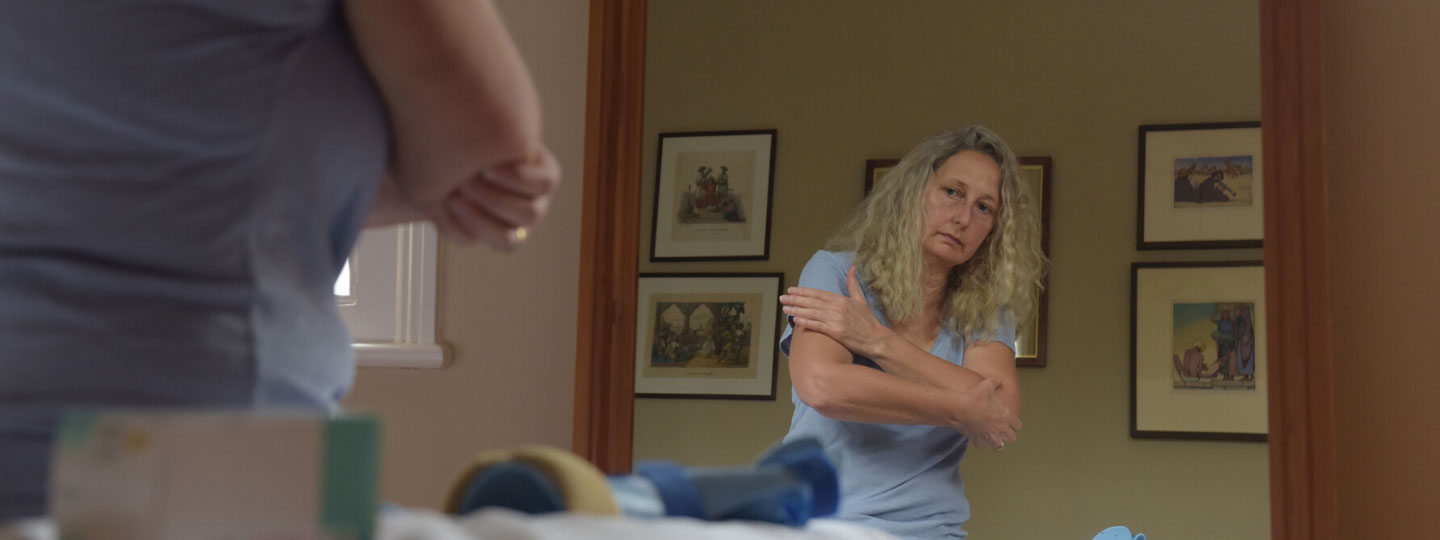Five ways to help manage back pain
30 March 2022
Back pain is very common and will affect many of us at some point in our lives.
The good news is that in most cases it isn’t a serious problem, and it might just be caused by a simple strain to a muscle or ligament.
As far as possible, it’s best to continue with your normal everyday activities as soon as you can and to keep moving to help stretch and strengthen your muscles and joints.
Try to maintain good posture when sitting or standing, and to change your posture often. When lifting, bend your knees, allowing your spine to move as necessary but without twisting it.
If you have a long-term condition that’s causing back pain, such as psoriatic arthritis, ankylosing spondylitis or fibromyalgia, it’s important to take any prescribed medication and follow the advice of your doctor.
Here's our top five tips to help you manage back pain:
1. Carry on with your normal routine
As soon as you can, carry on with your everyday routine as much as possible. Too much rest can make back pain worse and make it harder to get back into your routine.
Getting back to work sooner rather than later will help most people with back pain. If you work at a desk, ask for a workplace assessment so that your chair, desk and equipment are set up correctly. Try not to sit for too long and take regular breaks to walk around and stretch. Find out more about how strengthening and stretching exercises can help people with arthritis.
2. Keep Moving
Staying active can greatly help reduce back pain. Pilates, yoga and walking are great examples of ways to stay active. Start off gently, find an exercise you enjoy, make any adaptations you need and do as much or as little as you feel comfortable with.
- The NHS have produced gym free workouts like these chair yoga exercises and this Pilates video specifically for people with arthritis.
- For more inspiration on ways to get moving at home go to the We are Undefeatable website. They have ideas ranging from chair exercises, yoga to dancing in your kitchen.
- Try specific back exercises. There are simple exercises you can do every day that can greatly help with back pain. They’re designed to help with flexibility, which can release tension and reduce stiffness. They’ll also keep muscles strong, which will give your back more support.
- Let’s Move is our online programme for people who want more movement in their lives. Sign up today, and we’ll be there to support you every step of the way.
Taking painkillers such as paracetamol and non-steroidal anti-inflammatory drugs (NSAIDs) such as ibuprofen can help you stay active.
Back exercises with Collette and Jess
3. Don’t suffer in silence
If you’re struggling with pain or feeling down, speak with your doctor. You should also contact your doctor, if your back pain:
- is a result of an injury, such as a fall or car accident
- is really bad
- lasts for more than four weeks
- stops you working or doing the things you enjoy
- gets worse.
4. Simple treatments
Use heat and ice packs. A hot water bottle or a microwaveable wheat bag placed on your back can ease pain and stiffness. Or, applying ice can sooth pain and reduce swelling. A pack of frozen peas wrapped in a damp towel can work. Alternating between ice and heat throughout the day could help. Read more about ways to manage pain.
5. Keep to a healthy weight
Staying at a healthy weight is good for your back. We’d recommend a healthy, balanced and nutritious diet that’s low in fat, sugar and salt.
Eating plenty of fresh fruit and vegetable and drinking at least two litres of water a day is very good for you. The more active you are, the better. Read our advice on eating well with arthritis.
Find out more about managing back pain.
Help and support
If you have questions about back pain and exercise or you're unsure about anything, we are here to support.
- Call our free helpline on 0800 5200 520 (Monday to Friday, 9am to 6pm).
- Talk to our Arthritis Virtual Assistant, 24/7.
- Join our online community.
- Stay in touch and follow us on Twitter, Facebook and Instagram.